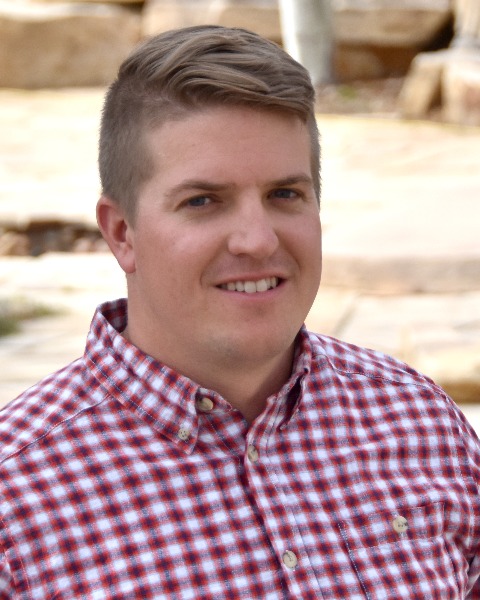Concurrent Session
Session: Rocky Mountain High
CS14B - Concurrent Session 14B: Colorado River Connectivity Channel Project: Challenges Faced in Design and Construction of the Reconfigured Windy Gap Dam
Tuesday, September 24, 2024
9:00 AM - 9:30 AM MT
Location: Colorado Convention Center, Meeting Room 503-504
- CB
Christina Bennetts
AECOM

Amin Gheibi
AECOM

Kevin Lock, P.E.
Senior Project manager
Northern Water
Berthoud, Colorado
Presenter(s)
Co-Presenter(s)
Windy Gap Dam and Reservoir, with their pre-modification layout and operation, impeded aquatic organism passage and sediment transport in the Colorado River, disrupting the natural ecological processes in the river. The Colorado River Connectivity Channel (CRCC) Project included the investigation, analyses and design of a reconfigured dam and reservoir allowing construction of a new channel and floodplain to provide continuity of the Colorado River adjacent to Windy Gap Reservoir that promotes natural geomorphic and ecological river processes.
The existing embankment dam consists of a 25-foot high, 5,500-foot long, zoned earth structure that comprises a clay core with alluvial shell materials, a soil-bentonite slurry trench embankment and foundation cutoff, and riprap slope protection. Approximately 900 feet of the existing embankment dam is retained as part of the CRCC Project. A new southern dam was constructed approximately 800 ft north of the previous, and tied into the existing embankment to form the reconfigured Windy Gap Reservoir. The new embankment is a homogeneous structure constructed primarily from alluvium sourced onsite with a soil-bentonite slurry wall cutoff extending into the foundation.
A series of challenges were encountered during analysis, design, and construction of the reconfigured dam. During design an issue-specific Semi-Quantitative Risk Analysis, performed in general conformance with Reclamation guidelines and State Engineers Office (Colorado) guidelines, was used to evaluate apparent filter incompatibility between core and shell material in the existing embankment. Potential filter incompatibility was also assessed between the soil-bentonite slurry backfill of the new embankment and its surrounding soils utilizing NRCS and Reclamation guidelines. Potential strength loss of foundation material beneath the existing embankment under the design earthquake was also addressed. Challenges faced during construction included keying the slurry wall trench into weathered rock in the foundation; tying the new slurry wall to the existing embankment core and foundation slurry wall to provide a continuous hydraulic barrier; and installing erosion control measures at the downstream toe of the new embankment using sheet-pile and launching riprap.
This paper will provide a discussion of methodologies incorporated to resolve the challenges faced during design and construction of the reconfigured Windy Gap Dam and Reservoir.
The CRCC Project is a collaborative effort with a diverse group of stakeholders including the Natural Resources Conservation Service, Trout Unlimited, Colorado Water Conservation Board, Grand County (Colorado), Municipal Subdistrict of Northern Colorado Water Conservancy District, Colorado River District, Upper Colorado River Alliance, Colorado Parks and Wildlife as well as others.
The existing embankment dam consists of a 25-foot high, 5,500-foot long, zoned earth structure that comprises a clay core with alluvial shell materials, a soil-bentonite slurry trench embankment and foundation cutoff, and riprap slope protection. Approximately 900 feet of the existing embankment dam is retained as part of the CRCC Project. A new southern dam was constructed approximately 800 ft north of the previous, and tied into the existing embankment to form the reconfigured Windy Gap Reservoir. The new embankment is a homogeneous structure constructed primarily from alluvium sourced onsite with a soil-bentonite slurry wall cutoff extending into the foundation.
A series of challenges were encountered during analysis, design, and construction of the reconfigured dam. During design an issue-specific Semi-Quantitative Risk Analysis, performed in general conformance with Reclamation guidelines and State Engineers Office (Colorado) guidelines, was used to evaluate apparent filter incompatibility between core and shell material in the existing embankment. Potential filter incompatibility was also assessed between the soil-bentonite slurry backfill of the new embankment and its surrounding soils utilizing NRCS and Reclamation guidelines. Potential strength loss of foundation material beneath the existing embankment under the design earthquake was also addressed. Challenges faced during construction included keying the slurry wall trench into weathered rock in the foundation; tying the new slurry wall to the existing embankment core and foundation slurry wall to provide a continuous hydraulic barrier; and installing erosion control measures at the downstream toe of the new embankment using sheet-pile and launching riprap.
This paper will provide a discussion of methodologies incorporated to resolve the challenges faced during design and construction of the reconfigured Windy Gap Dam and Reservoir.
The CRCC Project is a collaborative effort with a diverse group of stakeholders including the Natural Resources Conservation Service, Trout Unlimited, Colorado Water Conservation Board, Grand County (Colorado), Municipal Subdistrict of Northern Colorado Water Conservancy District, Colorado River District, Upper Colorado River Alliance, Colorado Parks and Wildlife as well as others.
